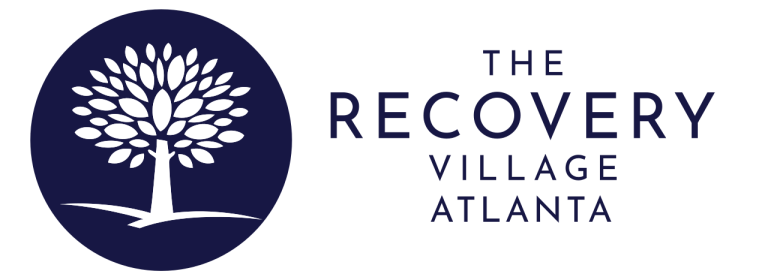Complex post-traumatic stress disorder (C-PTSD) is often linked to substance misuse and addiction. The relationship between trauma and addiction is a complex one. Several different factors contribute to someone with a history of complex trauma being at a greater risk of developing a substance use disorder (SUD). When there’s a co-occurring mental health disorder and a substance use disorder, it’s known as a dual diagnosis.
Fortunately, we provide trauma-informed dual-diagnosis care at The Recovery Village Atlanta Drug and Alcohol Rehab.
What Is Complex Post-Traumatic Stress Disorder (C-PTSD)?
Complex post-traumatic stress disorder (C-PTSD) is a mental health condition that can develop in people who have experienced long-term, repeated traumatic events. These events usually involve abuse and interpersonal trauma. C-PTSD is different from traditional PTSD in that it is caused by ongoing trauma rather than a single traumatic event. The accumulated effects of this type of trauma are what lead to C-PTSD.
C-PTSD is a term used to describe a type of trauma that results in a range of symptoms that go beyond those seen in traditional PTSD. This is why the trauma is referred to as “complex.” However, it’s important to note that C-PTSD is not officially recognized as a separate diagnosis in the Diagnostic and Statistical Manual of Mental Disorders (DSM-5).

It's time to get your life back.
Whether you are struggling with addiction, mental health or both, our expert team is here to guide you every step of the way. Don’t wait— reach out today to take the first step toward taking control of your life.
Although it’s not an official diagnosis, mental health experts have described experiences associated with C-PTSD. People who have survived the following may be most likely to develop complex PTSD:
- Child abuse
- Child exploitation
- Concentration camps
- Wartime imprisonment
- Domestic violence
- Sex trafficking or sex work
C-PTSD may change how a person responds to stress and sees themselves.
How Prevalent are C-PTSD and Substance Use Disorder in the U.S.?
According to the National Center for PTSD, most people experiencing a traumatic event don’t develop PTSD or C-PTSD. Around 6% of the U.S. population will have PTSD during their lives at some point. An estimated 5 out of every 100 adults in the U.S. has PTSD in any given year.
Among people with PTSD, nearly half also meet the criteria for a substance use disorder. More than 22% meet the criteria for substance dependence. The statistics are more difficult to measure for C-PTSD since it’s not a separate diagnosis. Still, they are likely similar as far as substance use disorders.
PTSD Symptoms
Symptoms of PTSD vary in intensity and duration but usually occur in one of four clusters. The four clusters of PTSD and the accompanying symptoms of each include:
- Intrusion symptoms: These include intrusive memories, flashbacks and nightmares.
- Avoidance symptoms: Someone with PTSD might go to great lengths to avoid reminders or triggers associated with the traumatic event. These symptoms could include avoiding people, places, things, activities, thoughts or feelings.
- Mood and cognition symptoms: These symptoms can include negative thoughts about oneself or the world, self-blame, loss of interest or feeling emotionally numb or detached.
- Arousal and reactivity: These symptoms can include hypervigilance, irritability, anger and trouble sleeping.
Symptoms must last at least a month for a PTSD diagnosis and significantly impact a person’s quality of life and daily functioning.
How Is “Complex” Trauma Different From “Simple” Trauma
Both complex and simple trauma involve exposure to distressing events that overwhelm a person’s coping abilities. Still, they differ in terms of the nature, impact and duration of the traumatic experiences.
With simple trauma, there’s usually a single traumatic event. Or, if there’s a series of events, they’re limited in scope. Examples include car accidents, physical assault or sudden loss.
Complex trauma involves prolonged, repeated exposure to traumatic events. They’re also usually interpersonal in nature. Complex trauma extends over a long period, and the cumulative impact can be profound. It’s not limited to one incident but instead includes a pattern of ongoing trauma.
Since war trauma is typically ongoing and not an isolated event, veterans are at risk of C-PTSD. Keep in mind that C-PTSD is not a formal diagnosis. However, one study of veterans found that 80.63% of a sample of veterans with PTSD had probable C-PTSD.
Symptoms of complex trauma can include:
- Distorted, negative self-perception
- Challenges in forming and maintaining healthy relationships
- A distorted perception of the perpetrator, such as idealization of them
- Loss of meaning and purpose
- Dissociating, which means an individual might feel disconnected from their thoughts, feelings and the world around them
The Brain, Trauma and Substance Use Disorder (SUD)
Experiencing repeated trauma can have a huge impact on how our brain works and looks. These changes can make us more likely to turn to drugs or other addictive things.
When someone experiences something difficult or upsetting, it can change the way their brain works. Over time, these experiences can lead to higher stress sensitivity, unclear thinking and difficulty controlling their emotions. It happens because certain parts of the brain that deal with stress and emotions can be affected by these experiences. These brain regions include the amygdala, hippocampus and prefrontal cortex.
A dysregulated stress response system can contribute to the use of drugs or alcohol as a way to cope with emotions. The self-medication hypothesis suggests people with a history of trauma may turn to drugs or alcohol to alleviate their symptoms.
When people experience difficult emotions, such as those associated with trauma, they may turn to drugs or alcohol as a way to cope. This is because their body’s stress response system is not functioning well, and they don’t know how to manage their feelings in a healthy way. It’s like they are trying to self-medicate to feel better.
When someone consumes drugs or alcohol, it triggers a part of their brain that makes them feel good. However, for people who have experienced trauma, this feeling of pleasure can become addictive. This is because it helps them temporarily forget about their emotional pain. Over time, the use of these substances can become an unhealthy coping mechanism for trauma. The changes in the brain can then increase the chances of becoming addicted to drugs or alcohol.
How Trauma and SUD Are Diagnosed
When a person experiences both trauma and substance use disorders, it’s important to get a thorough evaluation from professionals who specialize in mental health and addiction. These two problems can affect each other, so it’s essential to approach diagnosis and treatment in a coordinated way.
Steps in diagnosing co-occurring trauma and substance use disorders include:
- A clinical assessment conducted by mental health and addiction professionals looks at a person’s mental health history, trauma history, substance use history and current symptoms.
- Screening tools and questionnaires can be used for assessing the presence as well as the severity of symptoms related to substance use and trauma.
- A psychological evaluation assesses mental health and cognitive functioning and provides insight into emotional regulation and interpersonal relationships.
Usually, people who are struggling with both mental health and addiction need integrated treatment involving experts from both fields. This is because dealing with co-occurring trauma and substance use disorders can be complicated. The experts will work together to understand all the different parts of the problem. Then, they can come up with a plan to help the person get better.
Treatment Options for Trauma and Addiction
An integrative, comprehensive approach that addresses trauma and addiction at the same time should be used. Different therapeutic modalities and evidence-based interventions can help with healing and recovery. These can include:
- Integrated dual-diagnosis treatment: This program addresses trauma and addiction simultaneously.
- Psychotherapy and counseling: This may include cognitive-behavioral therapy (CBT), dialectical behavioral therapy (DBT) and eye movement desensitization and reprocessing (EMDR).
- Medication-assisted treatment: This program may be used as a way to treat substance cravings and withdrawal symptoms.
- Group therapy: These sessions create a supportive environment for sharing experiences, learning from others and receiving feedback.
- Mindfulness and relaxation techniques: These interventions help with managing stress, regulating emotions and developing healthier coping mechanisms.
- Family therapy: This type of therapy can help address communication patterns, improve family dynamics and educate family members about addiction and trauma.
- Holistic and recreational therapy: These approaches complement traditional therapies and can include yoga, art or music therapy.
The Importance of Trauma-Informed Care
Trauma-informed care is a way of helping people who have experienced difficult and traumatic events in their lives. It involves creating a safe and supportive environment for them to feel comfortable and understood. This approach takes into account the effects that trauma can have on a person and helps them to recover in a way that is safe and respectful. The goal is to help people heal from their past experiences without causing further harm or distress.
Evidence-Based Dual-Diagnosis Treatment in Georgia
The Recovery Village Atlanta Drug and Alcohol Rehab is a provider of research-driven and expert-led dual-diagnosis treatment. We work with clients who have co-occurring complex post-traumatic stress disorder and substance use disorders. Our team of experts is dedicated to helping our clients heal and start their journey towards recovery. Contact a Recovery Advocate to learn more or take the next step.










